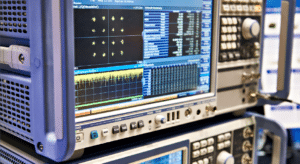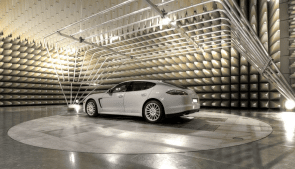Learn the benefits of using a pre-certified radio frequency (RF) module in the design phase when building a new IoT application, and learn the implications in EMC and Radio certifications. The Internet of Things (IoT) is revolutionizing the quantity and manner in which we exchange and store information. Historically, people exchanged information through reading and … [Read more...]
Millimeter Wave Applications and Promise
Imagine a radio frequency wavelength about the thickness of your pinky nail. This is a new area for technology applications. A growing area in spectrum development is exploding. For many decades, very high frequencies (millimeter waves) have been the playground of radio-astronomers to image our solar system, stars, and galaxies. This space is “new” fertile ground for sensing … [Read more...]
SI Metrics That Have Taken Us to 224G
In the world of signal integrity, we rely on many important metrics to qualify high-speed channel designs, both before prototyping and during prototype testing. There is a common group of signal integrity metrics that appear in high-speed digital interface standards and which need to be implemented in printed circuit boards and packages. These signal integrity metrics … [Read more...]
CubeSats: Flying Above and Within the Fray
All satellites are vulnerable to a wide variety of EMC and environmental effects, from launch to deployment. Of particular concern is the effects of Coronal Mass Ejection (CME) events. These are caused by sun activities that result in waves of cosmic rays and particles and electromagnetic energy. Significant CME events occur in sync with the “11 Year Sunspot Cycle” which, … [Read more...]
Use of Ferrite-Loaded Absorber to Reduce Wireless Self-Interference
Self-generated EMI from DC-DC converters, as well as digital and video processing, has long plagued designers of wireless and IoT devices, especially since physical sizes have trended smaller. The broadband harmonic content often extends up through 1.5 GHz, which includes most wireless protocols, cellular LTE and GPS/GNSS bands. One new mitigation technique I’ve been trying … [Read more...]
What is an EMC Risk Analysis?
Introduction The European EMC Directive (2014/30/EU) was updated in 2014, replacing the old directive (2008/108/EC) and became mandatory from April 2016 for any new product entering the EU from that date onwards. The change of directive was aimed at aligning the wording and terminology to ensure it was consistent with other CE Marking directives and implement standard text … [Read more...]
Measuring Shielding Effectiveness with Two Near Field Probes
Introduction Sometimes you may find yourself needing to make a quick check on the shielding effectiveness (SE) of a material, such as plated plastic or shield gasket material. It’s possible to set up a quick measurement setup using near field probes by using a couple H-field (for magnetic field SE) or E-field (for E-field SE). You’ll also need a spectrum analyzer with … [Read more...]
Troubleshooting Radiated Emissions at the EMC Test Lab
Note: This is an excerpt from the book, EMI Troubleshooting Cookbook for Product Designers, by Patrick André and Kenneth Wyatt. See Reference 1. Introduction Radiated emissions are by far your highest risk when performing compliance testing at the test facility. With all the high-speed digital circuitry inside electronic products today, it becomes all too easy for harmonics … [Read more...]
Using An Oscilloscope To Verify EMC Tests For Automotive Electronics
Consumer demand for more entertainment, safety, and communication options within automobiles has significantly increased both the density of electronic components and the number of on-board wired and wireless signals. The result: an ever-expanding range of signals contained within the same car-sized fixed space. USING AN OSCILLOSCOPE TO VERIFY EMC TESTS FOR AUTOMOTIVE … [Read more...]
Good SI, PI and EMC require this most of all…
Good SI, PI and EMC require a proper, grown-up understanding of electricity... Instead of what circuit designers are taught! As electronic designers, we were taught the children’s version of electricity at school, college, university, etc. This is the version that pretends (just as the SPICE simulator does) that electricity flows as little packets of charge totally inside … [Read more...]














